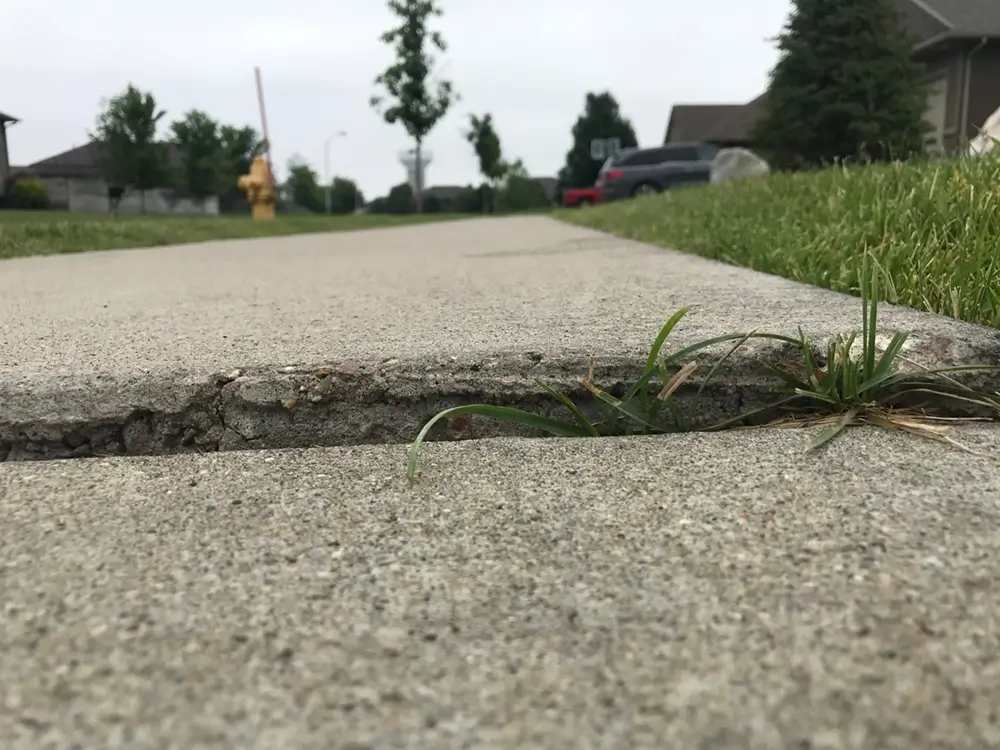Concrete leveling is the process of raising and stabilizing concrete that has either sunken or become uneven. At Detroit Concrete Leveling, we use advanced technologies such as polyurethane foam injections and limestone.
Concrete leveling is a fraction of the cost of replacing concrete and can effectively restore function and appearance — from driveways and sidewalks to patios and pool decks. Other benefits of concrete leveling include improved structural integrity, and the speed and ease of the process.
"*" indicates required fields
If there's an area of concrete that's either sunken or uneven on your property, we can fix it. From driveways to sidewalks, patios to pool decks, our leveling services will help ensure an even, attractive and safe final surface.
An uneven driveway can pose more than just a trip hazard, but can do serious damage to your vehicle. A level driveway can help prevent such problems and also improve your curb appeal and property value.
An uneven sidewalk is a risk to everyone in your neighborhood. Leveling uneven spots on or near your property can improve safety, enhance curb appeal and offer protection from potential liability.
Enjoy your backyard to its fullest by restoring any sunken or uneven spots on your patio. In addition to enhanced aesthetic appeal, you'll help improve accessibility and functionality.
Pools can be dangerous enough — uneven spots on the deck can only increase the likelihood of falls and subsequent injury.
Uneven surfaces can lead to structural issues and safety concerns. Polyurethane foam leveling offers a quick, durable, and eco-friendly solution that restores stability and improves the appearance of your property.
Limestone leveling helps address uneven surfaces and sinking areas by providing a natural, long-lasting solution. It stabilizes your foundation, reducing risks and enhancing the look of your property.
Uneven or sunken concrete is more than just unsightly — it can also pose a major safety threat. In some cases, concrete issues can even indicate a bigger problem with the structure of the affected area, which may only be made worse if you neglect to properly address it. Early intervention is key to restoring concrete's structural integrity and preventing more expensive — and expansive — repairs in the future.
Some common signs you need concrete leveling service include:
Safety. Structural integrity. Functionality. Improved aesthetics.
Those are the four key benefits of concrete leveling services. Additional benefits include the cost-effectiveness of the process compared to a full concrete replacement. Leveling is also a long-lasting solution that can help prolong the life of your surface and protect it from future damage. Key benefits include:
Leveling is a fraction of the cost of a full replacement.
Reduce the risk of trips, falls and subsequent injury from uneven slabs.
Repairing unsightly sunken concrete will improve your property's overall aesthetic.
Concrete problems often signal other underlying issues, which can be resolved with proper leveling.
Say goodbye to pooling water and the potential for erosion and settling.

From free and honest estimates to fast and efficient service to our ability to perform all of our concrete work in-house without contracting work to others, there are plenty of reasons why property owners have come to trust Detroit Concrete Leveling for all of their concrete needs.
What do you get when you combine experienced professionals with the most advanced equipment and the latest techniques? An exceptional end project. Before we put a shovel in the ground, we'll always assess your project to make sure we're recommending the best solution for a long-lasting result.
Save big money leveling and repairing concrete instead of replacing it. We use only the best materials and the most advanced techniques to ensure a lasting repair that will stand up to Michigan's demanding weather.
We don't take projects off or cut corners to get to the finish line. Our focus on customer service and satisfaction means you can always ensure clear, transparent communication, punctual service and high-quality workmanship throughout your project. What's more, we stand by our work with industry-leading warranties.
If your property has concrete issues, act now to have them addressed. Putting off work is only likely to result in a more complex and expensive service later. Contact us today to learn more about how Detroit Concrete Leveling's commitment to reliable, affordable and high-quality work has helped it become Michigan's go-to provider for concrete restoration and repair. We're happy to provide you with a hassle-free, no-obligation quote.
You have leveling questions. We have answers:
While this largely depends on the size of the project, most projects are completed anywhere from a few hours to a day.
This varies by project and the amount of material we'll need to adequately lift the slab. Generally speaking, you can expect leveling to cost about 1/3 of the cost of replacement.
We'll drill several 1-inch-diameter holes into the concrete to inject the material to level it. Following the process, we'll patch the drill holes.
Yes, consider concrete leveling a permanent solution. It's not a temporary fix.
If the crack is through the slab, leveling can usually serve as a fix. In cases of small cracks or crumbling, replacement may be the better option.
Get the quality you deserve from Detroit Concrete Leveling. If you’re ready to start your project, contact us today for a free, no-obligation quote.